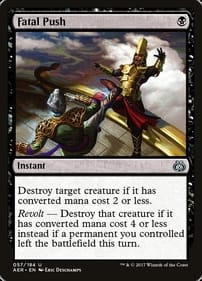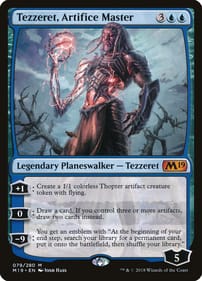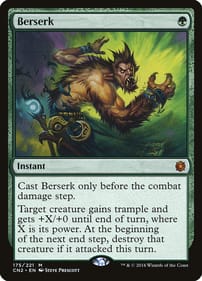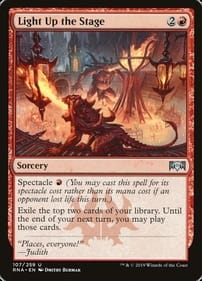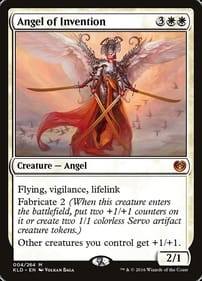During the Aetherdrift season, Wizards of the Coast introduced the Race to Victory play program, engaging players nationwide. The first three individuals to complete their tracking cards at each WPN-affiliated store earned qualification for the Race to Victory Aetherspark Championships. A diverse array of prizes was offered, including Play Booster packs, Collector Booster packs, Box Toppers, and exclusive Aetherdrift dice awarded to top performers. Most notably, the Philippine Champion would be honored with a unique and exquisitely crafted Aether Spark trophy.
The race was on! Players were doing their best to play in as many events as possible, each vying to be the one to represent Top Deck. In the end the three players who made it were: me, Raymond, and Jose. Unfortunately, Raymond was unable to go due to unforeseen circumstances, so I ended up going with Sir Jose to compete for the Philippines Champion.
Preparations:
One of the most challenging aspects of participating in this type of tournament, especially in an unfamiliar environment, was selecting the appropriate deck to bring. This decision was complicated by the uncertainty regarding the decks my opponents might choose, as well as the strategic innovations I might incorporate into my own deck. Nonetheless, I remain confident in my abilities, as I now possess a comprehensive understanding of the game's mechanics and strategies.
The deck I chose to bring to the tournament was Esper Pixie, selected for its strong presence in the current metagame and its consistent success across various events. I believe this deck is well-positioned to perform effectively in the upcoming tournament. As a player with a preference for control strategies, this deck aligns with my playstyle, providing both familiarity and confidence. It strikes a well-balanced approach, incorporating threats, removal options, and discard outlets while maintaining steady pressure on my opponent's life total and resources.
The day before the main event, I participated in our local game store's Store Championship, which served as valuable preparation. I secured 3rd place, losing only to my rival, Sir Jikko from Davao, who finished in 2nd place with an Azorius Convoke deck. This experience allowed me to assess the weaknesses of my deck, and I am grateful to my friends for their time and insights in helping me identify its most difficult matchups and areas for improvement.
The deck's core strategy heavily relies on spot removal, with less emphasis on board wipes, which makes it challenging to face decks that quickly establish a broad board presence. Aware of this weakness, particularly against go-wide strategies, I adjusted my sideboard to address these matchups by adding two copies of Temporary Lockdown and two copies of Pest Control. Preacher was included to help in grindy midrange matchups, Grim Baubles for Red Deck Wins (RDW) strategies, and Rest in Peace for graveyard-centric decks such as Jeskai or Azorius Oculus. Wilt-Leaf Liege was included for mirror matchups, while the remainder of the sideboard was focused on countering Domain decks, with particular emphasis on enchantment removal.
During the event:
I arrived early, with registration scheduled to begin at 12 noon. This gave me time to explore the venue, which was hosted by Neutral Grounds Centris at Eton Centris in Quezon City. I was able to have a meal, take a few pictures, and mentally prepare for the long hours of play ahead. During this time, I also had the opportunity to meet and converse with Sir Jose, my co-representative and a close friend of mine, who traveled in earlier. Despite having numerous deck options, he opted to bring in his preferred deck, Golgari Midrange.
Round 1: Mardu Monument
I lost Game 1 due to mana flooding, but I was able to discern the strategy behind my opponent’s deck. It included cards such as FOMO, Recommission, and Bitter Triumph, which led me to conclude that it was a Rakdos Reanimator deck with a splash of white, given that white provides effective, low-cost reanimation spells. Having encountered similar decks on MTG Arena, I sided in Rest in Peace and removed Destroy Evil and Cadaver Lab.
Game 2 was a closely contested match. I observed that my opponent was playing Monument to Endurance, and the life loss of 3 per discard brought our life totals very close—mine at 5 and my opponent’s at 2. However, I was fortunate to topdeck a bounce spell, which allowed me to return my Nightmare to my hand and drain my opponent's life, ultimately securing the victory.
Before Game 3, I adjusted my sideboard, bringing in Loran, Duress, and Preacher, while removing one copy of Kaito, Destroy Evil, and Momentum Breaker. I decided not to bring Rest in Peace back into my deck, recognizing that it was not significantly affecting my opponent’s game plan. Despite these changes, I ultimately lost due to the overwhelming presence of three Monument to Endurance cards on the field, causing me to lose 9 life per discard. My opponent also had sufficient removal to handle my threats, which prevented me from keeping pace in the match.
Round 2: Orzhov Control
Game 1 proved to be quite challenging, as I was uncertain of my opponent's strategy. Throughout the match, they continuously cast Temporary Lockdowns and disrupted my hand, exiling my permanents. Despite this, I was able to secure the victory as my opponent ultimately lost tempo and resources.
During sideboarding, I made several adjustments, replacing four copies of Nowhere to Run and Go for the Throat with Destroy Evil, Break the Spell, Preacher, Duress, and Loran, anticipating another Orzhov Control deck.
In Game 2, I was caught off guard when my opponent played Ketramose, their primary win condition, which allowed them to exile several of my permanents and disrupt my hand. I ultimately lost after depleting all my resources, while the lifelink, indestructibility, and card draw from Ketramose provided my opponent with considerable sustain.
Game 3 was equally difficult, as my opponent's Ancient Vendetta and The End effectively lobotomized my Kaito and This Town Ain’t Big Enough, weakening my position. These plays further fueled Ketramose, enabling it to attack while I lost all my win conditions and key engines in the deck.
Round 3: Izzet Monument
Game 1 proved to be relatively easy, as I struggled to understand my opponent’s strategy. They spent much of the game drawing and discarding cards using Demand Answers and Kickoff Celebrations. Meanwhile, I applied consistent pressure by draining their life with Hopeless Nightmare and a prowessed Otter from Stormchaser’s Talent. I was able to secure the victory in Game 1 with little difficulty.
During sideboarding, I speculated that my opponent was using another spellslinger deck, although I had not yet discerned their win condition. Taking advantage of my Game 1 victory, I replaced Go for the Throat with a copy of Duress from my sideboard, as I had yet to see my opponent cast any creatures.
In Game 2, I won by depleting my opponent’s hand to just one card, repeatedly casting Hopeless Nightmare, and maintaining pressure with my Otter token, gradually reducing their life total.
After the match, I inquired about my opponent’s win condition, and they revealed that it was Monument to Endurance—however, this card never appeared in either of our games.
Round 4: RDW
In Game 1, I kept a hand that lacked removals but included Stormchaser’s Talent and several bounce spells, not anticipating my opponent would be playing an aggro deck. My opponent's curve was flawless. They played Heartfire Hero on Turn 1, followed by Emberheart Challenger on Turn 2, and Screaming Nemesis on Turn 3. I conceded when I saw Manifold Mouse on Turn 4 accompanied by an Offspring, as the situation was no longer winnable.
During sideboarding, I chose to remove Destroy Evil, Cadaver Lab, and two copies of Stock Up, as these cards were too slow for this type of matchup. In their place, I added two Grim Baubles, Preacher, and Duress.
In Games 2 and 3, I felt confident with my opening hands, which contained two removals that could be bounced back to my hand, one bounce spell, and Stormchaser’s Talent. The rest of my hand consisted of Esper fast lands, making it an easy decision to keep. I won both games by exhausting my opponent's resources and capitalizing on my favorable opening hand. With no mana issues and ample interaction, I was able to control the game and secure the victory.
Round 5: RDW
For game 1 my opponent's curve was too fast, and as I played on the draw, I was unable to obtain black mana and failed to make a land drop on Turn 3. I conceded immediately when my life total dropped to 7 on Turn 4, still missing my second land drop.
This played out very similar to the previous round. Having prepared my sideboard for this specific deck, we were able to proceed swiftly to the next game.
In Game 2, I was able to stabilize the game by removing my opponent's creatures. However, my lands worked to my disadvantage, as I consistently took 1 damage each time I tapped them for the required colors. I was unable to draw any lands that did not cause me damage throughout the game, while my opponent continued to draw threats one after another. Ultimately, this led to my loss in the round, leaving my record at 2-3 for the tournament.
After Round 5, I concluded that reaching the top 16 was improbable, as attaining that position required no more than two losses. Despite this, I chose to continue participating in the final two rounds of the tournament, unlike some other players who opted to leave after the 5th round. I remained committed to enjoying the experience, having fun, and engaging with fellow players who share my enthusiasm for the game.
In Rounds 6 and 7, I competed against two mono-red decks. Confident in my ability to manage these matchups, I secured victories, aided by some favorable draws of lands and answers to my opponent's threats. I ultimately won both rounds with a 2-0 result.
Post-Match:
Aside from the fact that I thoroughly enjoyed playing, traveling to a new environment, and meeting numerous people, the experience also provided me with valuable lessons. I had the opportunity to witness plays I had never imagined were possible, particularly from the top tables. It was enlightening to hear different perspectives from various players, particularly regarding the standard metagame. Many individuals were anticipating and preparing decks specifically aimed at countering the current dominant deck, Esper Pixie.
One card that particularly stood out to me was Monument to Endurance. The decks built around this card proved to be quite challenging for Esper Pixie, often proving to be a formidable counter. However, the dynamic of Magic: The Gathering can often be compared to a rock-paper-scissors scenario. While Monument to Endurance may pose a solution to Esper Pixie, it has limited impact on other popular meta decks such as Domain, Dimir, Golgari Midrange, and even RDW, which often do not rely on the same strategies.
Overall, this tournament served as a valuable learning experience, offering insight into both the evolving strategies of the game and the perspectives of a diverse group of players. The opportunity to engage in such a competitive environment not only sharpened my skills but also deepened my understanding of the meta and its ever-changing dynamics. I look forward to applying these lessons in future events and continuing to grow as a player.

Erik Pacturan
Aetherdrift: Race to Victory Qualifier


